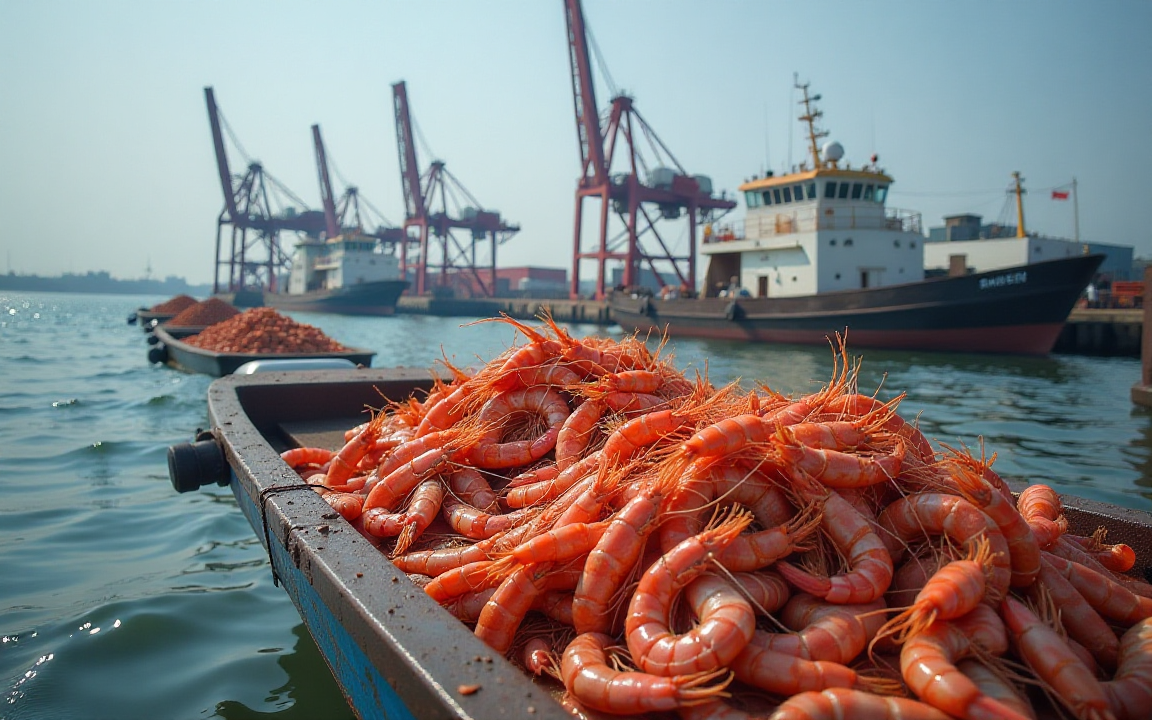India’s dominance as the leading supplier of shrimp to the United States is being threatened by Donald Trump’s proposed 50% tariff, forcing many in the industry to consider alternative livelihoods.
Andhra Pradesh is India’s leading shrimp exporter to the US. Over the years, farmers in the state have invested significant capital (millions of rupees) to cultivate high-quality shrimp in saline ponds.
Indian exporters have drastically cut the rates offered to farmers by nearly 20% following the recent tariff imposition, according to a Reuters report. This significant reduction has severely impacted farmers, eliminating most of their profits.
“I am contemplating if I should do fish farming,” V. Srinivas, a 46-year-old shrimp farmer from Veeravasaram village was quoted as saying in the report.
Srinivas has already mortgaged his family property, and has $45,000 in outstanding personal loans.
These prices will not help me get any profits and I will not be able to pay off my loan.
India’s seafood exports reached $7.4 billion last year, with shrimp making up 40% of this total. The United States is the primary destination for Indian shrimp, supplying major supermarket chains like Walmart and Kroger.
Industry woes
The industry faces significant challenges due to US President Donald Trump’s tariffs.
A 25% tariff on Indian imports is already active, the highest among major economies. An additional 25% levy will be imposed from August 27, in response to New Delhi’s purchase of Russian oil.
Ecuador, India’s primary competitor in shrimp exports to the US, benefits from a significantly lower 15% tariff, which gives it a substantial competitive advantage.
Approximately 300,000 shrimp farmers in Andhra supply their products to numerous exporters who then ship them to America.
Pawan Kumar, head of the Seafood Exporters Association of India, stated that US clients have recently halted orders.
This is due to buyers’ unwillingness to accept the tariff, and exporters are similarly unable to absorb it, leading them to reduce prices paid to farmers.
Kumar stated that while India exports shrimp to nations like China, Japan, and the UK, and will probably aim to boost sales there and explore new markets, this expansion “won’t happen quickly.”
Disruptions
Trump’s tariff threats continue to disrupt global businesses, with India particularly affected. The country faces some of the highest levies, which have strained its relationship with Washington.
In Andhra Pradesh, six of the 12 farmers interviewed by Reuters are contemplating suspending shrimp farming to pursue alternative ventures such as fish farming, vegetable retailing, or other local businesses to navigate the current crisis.
The remaining six have opted to persevere. Each cycle of shrimp cultivation typically spans two months or longer.
Shrimp farmers report significant financial strain despite reduced prices for their product. They continue to grapple with loan repayments and substantial operating expenses, including electricity, raw materials, feed, and high land rentals.
Gopinath Duggineni, head of a local union in Ongole, stated that farmers intend to request financial aid from the state government, explaining, “There’s hardly a 20-25% profit for us on good days, and if that’s getting eaten up, what else is left?”
Opportunities
Ecuador is closely monitoring Indian tariffs for potential business opportunities.
However, Ecuadorian producers are hesitant to make new investments due to the uncertainty surrounding a possible tariff agreement between India and the Trump administration, according to Jose Antonio Camposano, president of Ecuador’s National Chamber of Aquaculture.
Camposano added:
India’s exports are highly concentrated in the United States…just as China is for us. So that is where we could gain ground if India withdraws.
The post Indian shrimp farmers face ruin as US tariffs erase profits appeared first on Invezz

